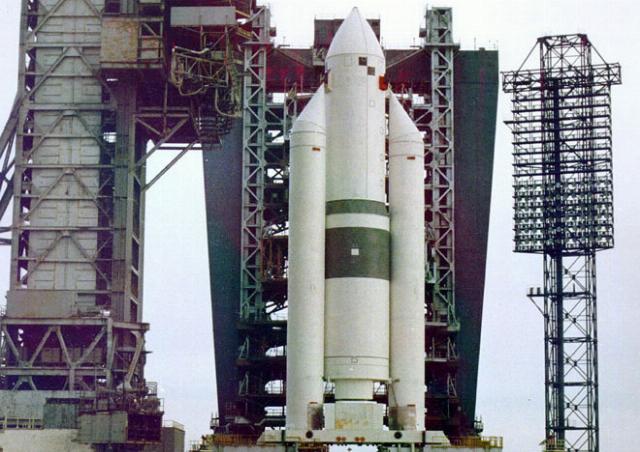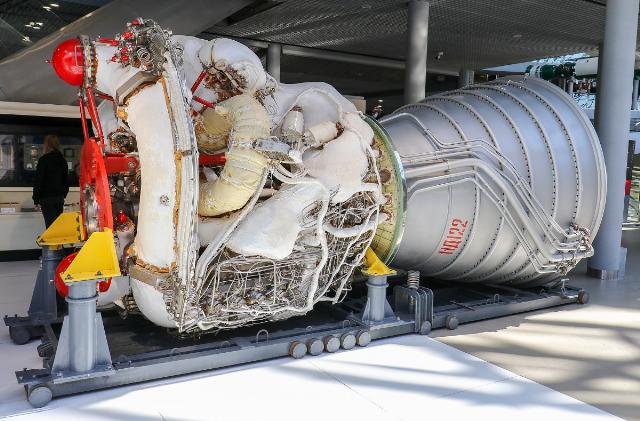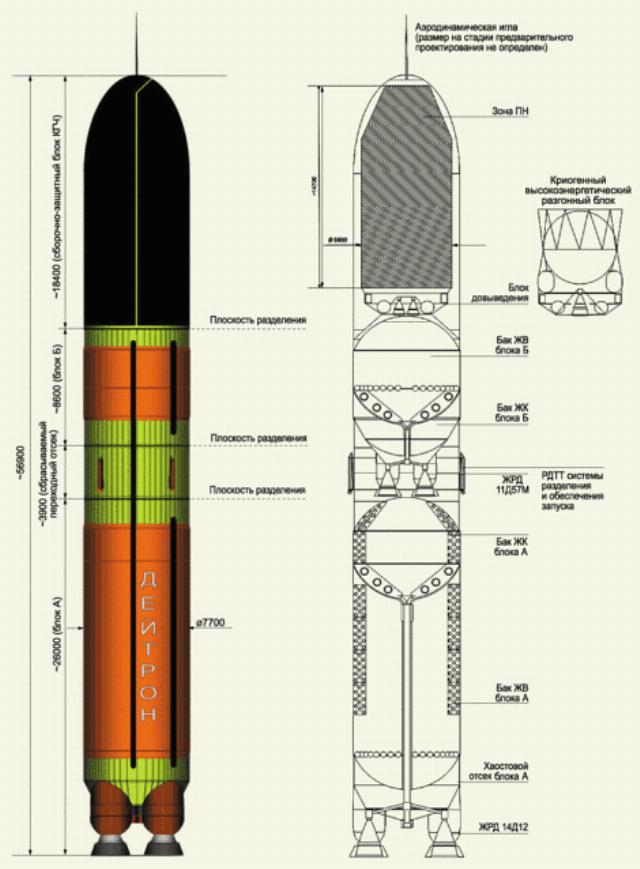
Energy-M
As you know, Soviet engineers created two powerful launch vehicles, the N-1 and Energia, whose power plants used liquid oxygen as an oxidizer. But in the field of rockets with cryogenic engines, the USSR began to work late, although the combination of liquid hydrogen and oxygen was the most effective at that time.
Moreover, it was not that Soviet specialists did not pay serious attention to cryogenic technologies — since the late 1950s, several design bureaus began to actively engage in installations of this type, but all these developments implied the use of cryogenic fuels only in the upper stages of carriers. At the same time, in the USSR it was believed that the use of liquid hydrogen in rocket engines was a very problematic issue, since it required maintaining a low temperature of -253 °C, and there were many other rather complex technological problems. For example, it can easily leak through various seals, and it takes up considerable amounts on board the rocket. All this combined to determine the fact that Soviet engineers paid more attention to less efficient kerosene than liquid hydrogen in launch vehicles, or rather in their first stages. But within the framework of the Energia-Buran program in the 70s, serious shifts took place in this direction. To be more precise, Energia with RD-0120 first-stage engines (liquid hydrogen and liquid oxygen), developed by specialists from the Design Bureau of Chemical Automation (KBHA), became in fact the first domestic carrier with cryogenic power plants. Moreover, according to the specifications, the RD-0120 was very similar to the American RS-25 used to launch the Shuttles.

RD-0120 engine
As a result, Energia became the most powerful launch vehicle capable of launching over 100 tons of payload into low-Earth orbit, as well as launching Buran-class spacecraft. It was clearly ahead of its time, as it was too powerful for the main space tasks of that time. Against this background, in the late 1980s, a number of promising developments of less powerful rockets with extensive use of technologies created during the implementation of the Energia program were received from Soviet specialists. In 1989, TSSKB Progress, which was responsible for the introduction of RD-0120 engines into Energia launch vehicles, proposed its own project called Deutron, a fully cryogenic carrier capable of launching up to 40 tons of payload into orbit. It is believed that this rocket received the name "Deutron" due to the fact that its actual payload capacity was twice that of the legendary Proton. After all, the nucleus of a deuterium atom is twice as heavy as a proton, and the projected carrier had a payload about twice as large as that of a Proton.

The Soviet Deutron launch vehicle
Deutron was planned to be used to send heavy-class satellites into orbit, as well as automatic interplanetary stations for exploring other planets. It is worth noting that TSSKB specialists proposed several variants of the Deuteron at once, of which a variant with a launch mass of slightly more than 510 tons and dimensions of 58 x 7.7 meters was put up for discussion. The first stage of this rocket was going to be equipped with four RD-0120 engines, and 4 or 6 small solid-fuel installations were meant for its separation. Progress estimated that they would be able to build from 6 to 10 Deuterons annually, and one launch of such a launch vehicle would cost 12 million rubles. However, politics intervened in the fate of the Deutrons, and boosters similar to the Energia engines were included in its design, but based on similar Zenit carrier devices that were manufactured outside of Russia. That's what killed the Deuterons. The Deutron redesigned in this way was labeled Deutron-21 and actually represented Energia-M of the 1991 model. That is, it was a slightly reduced version of Energia, which did not survive the 1990s, initially bearing the name 217 GC Neutron and having the same carrying capacity of about 40 tons.

Energy-M
In 1991, Deutron was renamed Energia-MT and its payload was reduced to 30 tons, but it, like Energia-M, was forgotten and abandoned. With a high degree of probability, Deutron could have become the first cryogenic heavy-class launch vehicle in history, but 15 years later, the American Delta IV Heavy took the lead in this class, which will soon be replaced by Vulcan with a Centaur upper stage.
Max Antonov
